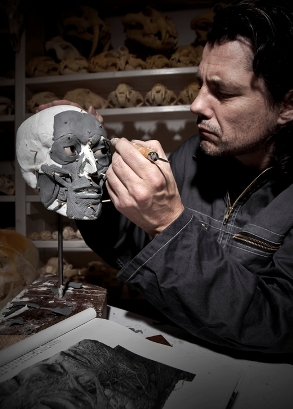

This Month's Oddity in the News:
The Newest Information about Ötzi, the Iceman
To Celebrate the 20th Anniversary of his Discovery
A 5,300-thousand-year-old frozen mummy found in the Ötztal Alps
(mountains on the border of Austria and Italy)
IN THE ARCHIVES:
Tiny Cell Towers
Voyager
Mammoths
Oswald's Coffin
Raining Frogs
The Real Chupacabra
75-Year-Old Mystery
History of Halloween
The First European
Resurrection of an Extinct Animal
Medieval Vampire Skull
NOW WE KNOW WHAT ÖTZI MAY HAVE LOOKED LIKE
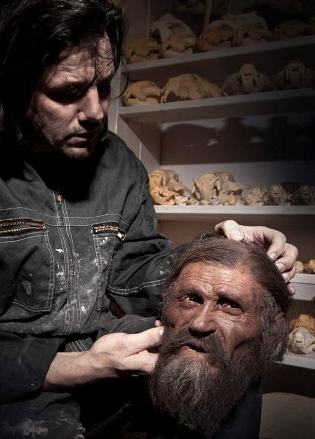
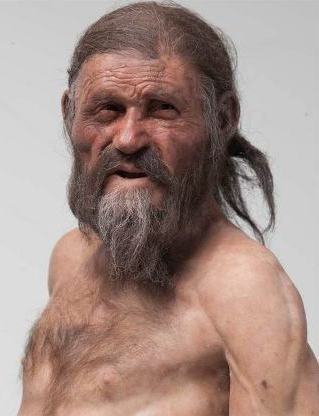
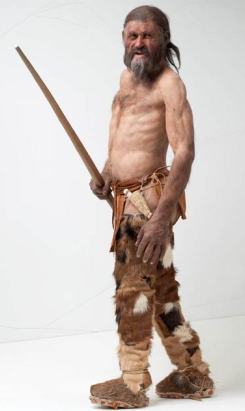
Discovery News, Feb. 25, 2011 -- Brown-eyed, bearded, furrow faced, and tired: this is how Ötzi the Iceman might have looked, according to the latest reconstruction based on 20 years of research and investigations.
Realized by two Dutch experts, Alfons and Adrie Kennis, the model was produced with the latest in forensic mapping technology that uses three-dimensional images of the mummy's skull as well as infrared and tomographic images.
The new reconstruction shows a prematurely old man, with deep-set eyes, sunken cheeks, a furrowed face and ungroomed beard and hair.
Although he looks tired, Ötzi has vivid brown eyes. Indeed, recent research on the 5,300-year-old mummy has shown that the Stone Age man did not have blue eyes as previously thought.
Believed to have died around the age of 45, Ötzi was about 1.60 meters (5 foot, 3 inches) tall and weighed 50 kilograms (110 pounds).
The model will go on display beginning March 1 to Jan. 15, 2012, at the South Tyrol Museum of Archaeology in Bolzano, Italy.
Called "Ötzi 20," the exhibition celebrates the 20th anniversary of the mummy’s discovery. The Iceman’s frozen body was found in a melting glacier in the Ötzal Alps -- hence the Ötzi name -- on Sept. 19, 1991.
Photo credit: Heike Engel-21Lux/Südtiroler Archäologiemuseum/NATIONAL GEOGRAPHIC DEUTSCHLAND
By Rossella Lorenzi
See the entire article HERE.
See more images of what Ötzi may have looked like HERE.
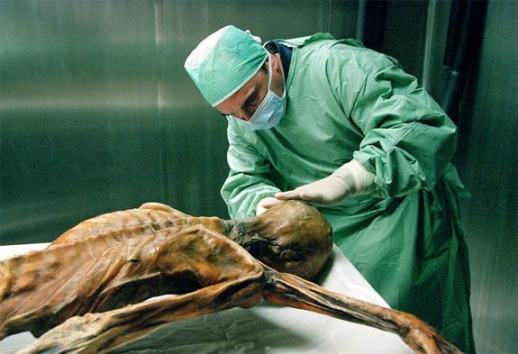
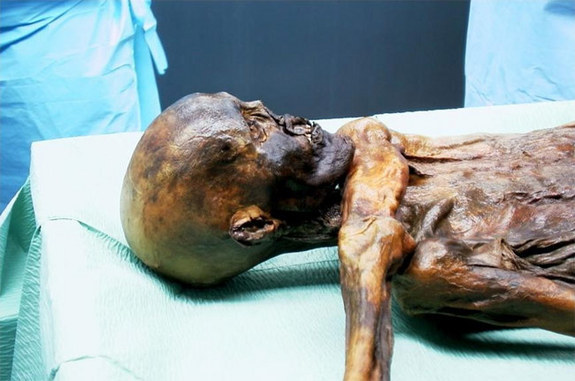
What was the Iceman's last meal?
Now we may know that too!
Oeggl reconstructed the Iceman's last meal from his microscopic analysis of a tiny sample removed from the mummy's transverse colon, the part of the intestine just beyond the stomach. When the Iceman was discovered in 1991, x-rays and CAT-scans of the corpse revealed that his internal organs had shrunken so drastically in the 5,300 years in the glacier that Dr. Dieter Zur Nedden, the radiologist who examined the images, could barely distinguish them. Instead of filling the chest cavity with their billowy white form, the lungs looked like wisps of clouds.
But at the top of the colon, Zur Nedden made out a slight bulge, which the radiologist suspected was a clump of half-processed food. The progress of the food indicated that the Iceman had last eaten about eight hours before he died, possibly of hypothermia, on the Hauslabjoch pass, which cuts over the main Alpine ridge dividing Austria from Italy at 10,500 feet above sea level.
Not until several years after the discovery did the Innsbruck scientists finally cut a hole into the mummy, insert an endoscope, and snip out about .004 ounces from the colon. Dr. Werner Platzer, the University of Innsbruck anatomist then in charge of research on the corpse, gave .0016 ounces milligrams of the material to Oeggl, who had already been studying the rich botanical finds from the site.
Not everything passing through the Iceman's gut had been swallowed intentionally, or was even desirable. Oeggl also found the eggs of the human whipworm. Many people alive today who do not live in areas with flush toilets also carry the worm, which can cause unpleasant symptoms like stomach ache and diarrhea, or even lead to malnutrition. The scientists have no way of knowing whether the Iceman had any such complaints.
See the entire article by Nova HERE.
